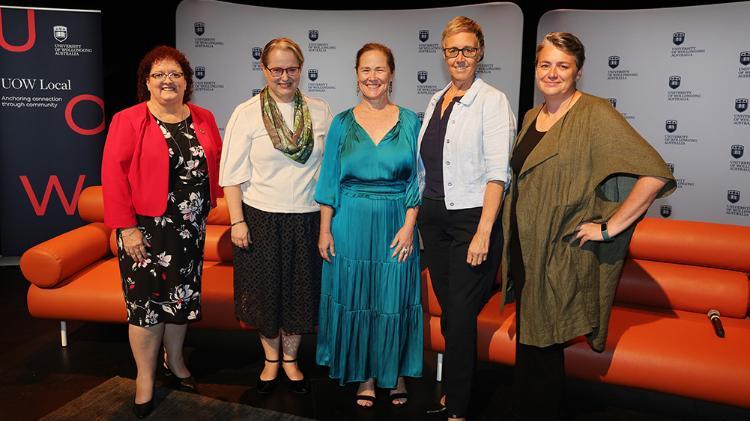Luminaries is a thought-provoking series of panel discussions featuring UOW researchers and thought leaders locally and globally. Luminaries is delivered through live events at Illawarra Performing Arts Centre, broadcast from the UOW TV Studio or via webinar. Each panel aims to highlight important community issues tackling health, social, environmental and economic challenges.
Topical talks between experts
Luminaries
Upcoming webinars
There are currently no events for this period
We have had an engaging lineup of Luminaries webinars for 2024/25! Webinars showcased thought-provoking discussions on pressing social, environmental, and economic challenges.
- From meltdown and mayhem to calm and connection (YouTube) (January 2024)
- IWD panel discussion: Economic independence & housing solutions for women. (YouTube) Luminaries event feat Gong Talks / UOW Local. (12 March 2024, Illawarra Performing Arts Centre)
- Tackling stigma, tackling cancer: the journey of the HPV vaccine (April 2024, via Zoom)
- Tech & media unmasked: redefining self-image & authenticity (April 2024, via Zoom)
- Hepatitis C: A public health success story (May 2024, via Zoom)
- Empowered Beyond ‘Bad Bosses’: Fostering Workplace Confidence and Leadership (May 2024, live from the UOW TV Studio)
- The evolution of The Castle- Navigating the housing crisis - June 23
Luminaries and GongTalks - International Women's Day Panel Discussion
To mark International Women's Day in 2024, the University of Wollongong (UOW) hosted a free in-person Luminaries panel discussion at the Illawarra Performing Arts Centre, focusing on women's financial freedom and housing stability.
Browse the photo gallery
Connect with us
Contact the UOW Reputation and Engagement Team.